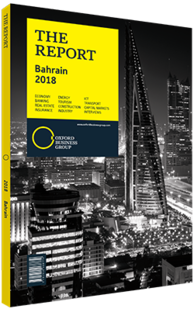Najla M Al Shirawi, CEO, SICO: Interview

Interview: Najla M Al Shirawi, CEO, SICO
How will the fixed-income segment evolve in an era of lower oil prices and tighter budgets?
NAJLA M AL SHIRAWI: GCC sovereigns and quasi-sovereign institutions are expected to continue to borrow from debt capital markets in order to fund their budget deficits amidst lower oil prices. This implies that debt supply is likely to increase going forward, and could assert downward pressure on bond prices if there’s no demand. However, regional governments have already started to counterbalance the effects of lower oil prices through subsidy cuts and other fiscal initiatives such as the introduction of value-added tax from 2018 onwards. Such measures should have a positive effect on the credits of regional bonds, and are a step in the right direction for stability in the medium term.
We are also likely to see more international or dual-currency bonds from the region as governments look to capitalise on cheaper rates abroad and manage their debt through effective exchange rate hedging. However, such policy responses come with a caveat, namely higher interest rates and implementation risk. A delay in implementation simply makes bond prices more volatile and susceptible to changes in oil prices and interest rates. Having said that, regional default risk is at its lowest since the financial crisis, but further downgrades are possible if policy responses are not effective or growth is stifled.
What measures can be taken to further increase liquidity and trading activity on the bourse?
AL SHIRAWI: Since the launch of the Bahrain Liquidity Fund in mid-2016, average daily trading activity on the Bahrain Bourse has more than doubled in 2017, supported by an 80% jump in the number of transactions. Nevertheless, in order to attract more large institutional investors, market depth and liquidity need to improve. Free float of several key blue chip companies on the bourse is listed as being between 10-20%, wherein the real free float percentage is much smaller. Companies should be encouraged to increase their free float, perhaps engage an active market maker to boost liquidity in the stock and/or opt for a secondary offering in the market. Further suggested measures include enhanced corporate governance, mandatory and proactive investor relations practice, and regular interaction with investors and analysts. The bourse also needs better representation from companies outside the investment and banking sectors – which currently account for more than 70% of the market cap index – in order to provide investors with an opportunity to diversify their investments. Privatisation of state-owned entities and encouraging initial public offering at reasonable valuations will also attract both domestic and international investors and boost trading volumes.
Recently, the bourse launched the Bahrain Investment Market (BIM) to facilitate and encourage family businesses seeking access to growth capital by listing them on an alternate platform instead of the benchmark index. There are fewer regulatory requirements on the BIM, making it a cost-effective alternative that will stimulate capital market activity in the kingdom.
How can we expect the main stock index to perform across sectors in the coming years?
AL SHIRAWI: Bahrain’s stock market has several companies across sectors offering high and stable yields (over 6%) that are trading at a discount of 15-20% compared to their regional and international peers. One of the factors leading to such a discount is illiquidity, as trading volumes are still thin across many stocks.
However, with over $30bn in projects currently under construction or scheduled for the near future, there are growth prospects in the economy, which are expected to benefit many companies on the bourse. We believe there are opportunities within the banking, industry, real estate and construction, and telecoms sectors for local and international investors to generate long-term capital growth as well as sustainable high dividends.
You have reached the limit of premium articles you can view for free.
Choose from the options below to purchase print or digital editions of our Reports. You can also purchase a website subscription giving you unlimited access to all of our Reports online for 12 months.
If you have already purchased this Report or have a website subscription, please login to continue.

